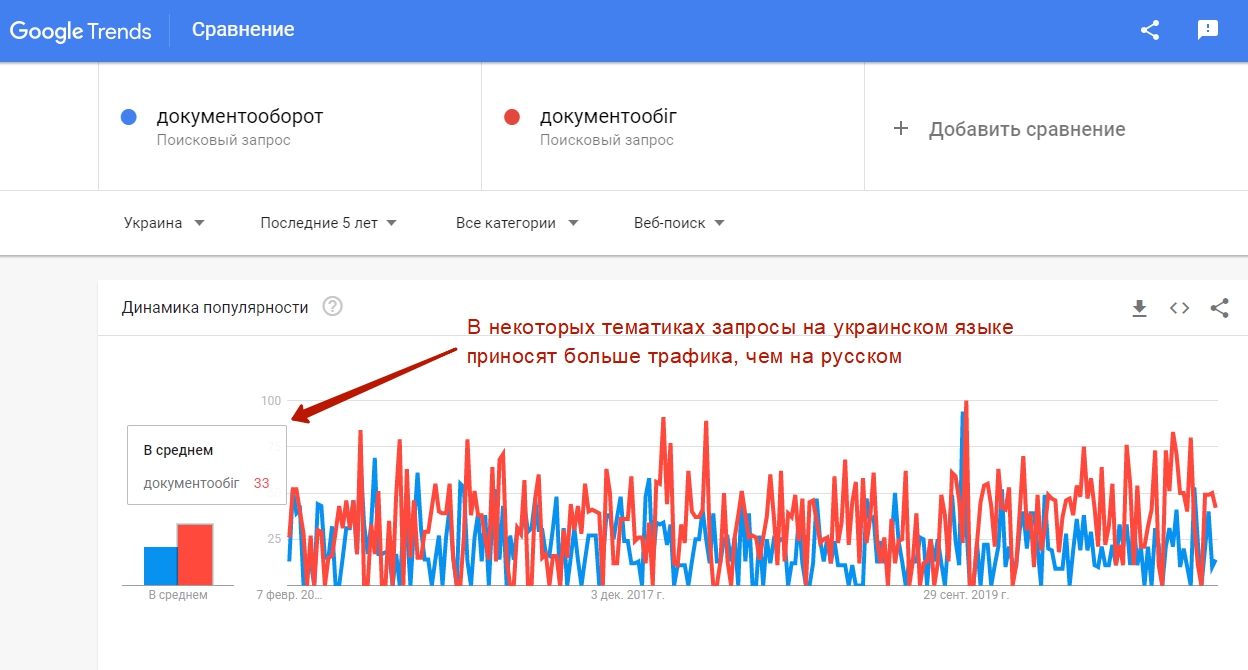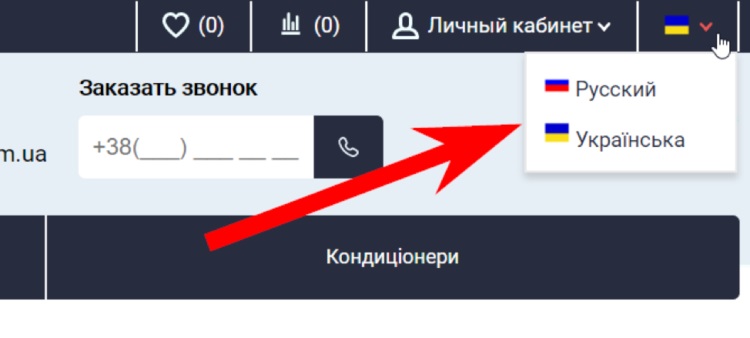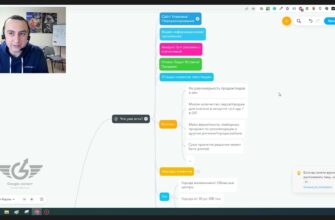- Do I need a mandatory translation of the site into Ukrainian now?
- When do I need to translate a website into Ukrainian?
- Why is the Ukrainian version of the site necessary?
- What are the possible errors when connecting the Ukrainian version?
- How to translate a website into Ukrainian: step by step instructions
- Translate page content
- Include URLs for Ukrainian pages
- Add a language switcher to the site header
- Add the hreflang attribute and rel=”alternate”
- Add Ukrainian page URLs to sitemap.xml
- Give the Ukrainian version the status of the main one
On January 16, 2021, the law of Ukraine “On Ensuring the Functioning of the Ukrainian Language as the State Language” came into force. This decision guarantees the use of the state language in the public space, including the field of information technology.
At the end of April 2019, immediately after the approval of the Verkhovna Rada of Ukraine, the law caused a great resonance in the business community. Many questions arose on the agenda: is it mandatory to translate the site into Ukrainian, how long does it need to be done, and what punishment awaits those who violate the new law?
This article will help you find answers to all the above questions.
How many calls and sales will I get by ordering contextual advertising from you?
I need to calculate the conversion of my website Describe
the task
in the application
Calculate potential ad revenue Google
contextual advertising calculator
Do I need a mandatory translation of the site into Ukrainian now?
The law “On Ensuring the Functioning of the Ukrainian Language as the State Language” signed by the President refers not only to the mandatory translation of websites into Ukrainian, but also to the transition of the entire online segment of Ukraine to it. The document contains the following requirements:
- All applications and websites of companies, local and foreign, operating on the territory of the country, by default, must now be loaded in the Ukrainian version. The content and volume of content in other languages should not exceed the original Ukrainian content;
- Posts and messages in social media accounts of foreign companies and organizations from Ukraine must be published in Ukrainian;
- Any commercial communications sent electronically on behalf of an online commerce entity must be written in the state language. This applies to information for the distribution of which SMS, instant messengers, email, service messages, chat bots, advertisements, etc. are used;
- Primary interaction with the client should take place in the state language. For example, during a call to confirm an order or in the process of communicating in a pop-up online chat, the manager must communicate in Ukrainian. Switching to another language is possible if requested by the client;
- Software must be developed with Ukrainian interface. For applications, unlike websites, an exception is provided – it is also allowed to use the interface in one of the official EU languages. So, if the application is in English, you do not need to develop an additional Ukrainian version.
When do I need to translate a website into Ukrainian?
The deadline for translating the site into Ukrainian is January 16, 2021. After this date, appropriate measures must be taken against violators of the requirements of the law:
- primary complaint — web resource audit;
- repeated – a warning is issued;
- Another case of violation – a fine is imposed.
If the information provided by the website about products and services is found to be inconsistent with the norms prescribed by law, the official who committed the violation will be fined 300-400 times the minimum tax-free income. Now this amount is 5100-6800 hryvnia.
Advice! We strongly recommend that you bring your web resource in line with the requirements of the new law, since from November 2020, any user of the Ukrainian segment of the Internet can complain about the lack of a Ukrainian version of the web resource.
If violations are revealed during the inspection, then they will need to be corrected no later than 30 days.
Why is the Ukrainian version of the site necessary?

- One of the arguments why it is necessary to translate the site into Ukrainian is the prospect of an increase in the number of transitions to the site for Ukrainian keywords. The competition here is still not high, so there is a chance to take positions in the top of Google without much effort. The site should be translated as early as possible, because as the number of translated trust sites increases, it will be more difficult to reach a leading position in search engines, and it will be more expensive to attract an additional audience. Coverage of a larger number of users and traffic growth will occur due to the expansion of the semantic core of the site after the translation of product cards and pages with services into Ukrainian;
- The increase in sales and revenue is a natural consequence of increased traffic. Expanding the audience and attracting more targeted visitors always has a positive effect on sales;
- Demonstration of their loyalty to clients, who every year increasingly use the Ukrainian language both in everyday life and in business negotiations. The trend leads to the fact that the popularity of search queries in the state language will continue to grow. Clients will increasingly give preference to sites in Ukrainian. Betting on development, the preferences of such customers should be taken into account. And this is in addition to the inhabitants of Western Ukraine, who are principled in their choice of language and have always communicated in Ukrainian;
- Work in accordance with the requirements of the law. All those whose business is registered in the country are obliged to comply with the legal norms of Ukraine. You can pay a fine or even get away with checking, but are the risks and reputation really worth it? Surely not.
What are the possible errors when connecting the Ukrainian version?
The most common mistakes when translating a site into Ukrainian are:
- Duplicate pages on the site. Most often, this problem can occur with large sites (online store, news resource, etc.). It happens when some of the pages were not translated, but simply duplicated Russian content on Ukrainian pages. Thus, the same content is duplicated on different URLs. This leads to a decrease in the ranking of duplicates first, and if there are a lot of them, then the entire resource;
- The site did not specify (or incorrectly specified) the hreflang attribute. This can lead to the fact that for the majority of requests for Russian-language queries, Ukrainian-language pages will be displayed. This will lead to a decrease in conversions and an increase in bounces;
- Transfer of Russian pages to the /ru/ folder without redirects. In this case, a sharp drop in traffic on pages in Russian is inevitable. The fact is that if the resource is old and other sites link to these pages, then this is a big plus in ranking. If we change the URL of the pages to a new one, we not only create duplicates in the search results (https://site.ua/category and https://site.ua/ru/category can be simultaneously indexed by the search engine and be duplicates of each other) , but also deprive these pages of the ranking advantage of old links.
Therefore, the universal advice in this case – if you need to translate an old site with traffic into Ukrainian, it is better to contact an SEO specialist to do everything right.
How to translate a website into Ukrainian: step by step instructions
Consistent and systematic work on the translation of the site will definitely bring benefits. After studying the recommendations listed below, you will learn how to translate a website into Ukrainian and at the same time expand your audience and attract additional traffic. You should act in accordance with the following algorithm:
Translate page content
The best solution is to create Ukrainian content from scratch. But even a high-quality translation will help expand the semantic core of a web resource. It can be done by both professional journalists and copywriters, and the entrepreneur himself, in the case when it comes to a small amount or the use of highly specialized terms.
How many calls and sales will I get by ordering contextual advertising from you?
I need to calculate the conversion of my website Describe
the task
in the application
Calculate potential ad revenue Google
contextual advertising calculator
Advice! When using online translation services, the result must be subtracted and, if necessary, corrected. To make a good first impression on a visitor, this is a must. It is also useful for proper ranking in search engines.
It is important not to forget that it is necessary to translate not only the texts themselves, but also meta tags and headings.
Include URLs for Ukrainian pages
There is a belief that the Ukrainian version of the site must be placed in the root folder. And if Russian-language content is already located there, then it must be moved to the subfolder https://site.ua/ru/.
Such a content migration can cause traffic loss not only during page re-gluing, but even after it is over. To solve the problem when generating static addresses for localization, you can create /ua/ or /uk/ subdirectories and place Ukrainian-language content in them, observing the current structure of the web resource. You don’t need to redirect to the language subdirectory.
The site in the Ukrainian version will be available at https://site.ua/uk/, while the Russian-language content will remain in the root directory https://site.ua/.
Add a language switcher to the site header

Such a switch is necessary for the convenience of the user. For example, if he got to the Russian version of the site from the search, and it is more convenient for him to perceive content in Ukrainian, he can switch at any time, and vice versa.
Add the hreflang attribute and rel=”alternate”
This is how search engines know that this page has an alternate language version. Attributes with links to the main and alternative versions must be present on all pages of the resource.
Information! Sometimes for the Ukrainian language, the designation ua is used in hreflang, which is incorrect. According to the ISO 639-1 format, the correct code for Ukrainian is uk.
For a multi-regional web resource, it is advisable to additionally indicate the country code, which in this case for Ukraine is just designated as UA. Thus, to send Russian-language requests from users from Ukraine, you need to write hreflang=”ru-UA”, and for Ukrainian-speaking ones – hreflang=”uk-UA”.
Add Ukrainian page URLs to sitemap.xml
Supplement the sitemap by adding addresses of Ukrainian-language pages to the Sitemap.xml file. This can be done either by creating a separate map with a localized version or by adding new addresses to the current list.
There are no restrictions on the presentation of data, it is enough to follow the general recommendations for creating a sitemap. A new map can be submitted via Google Search Console to update information in the search engine.
It will take from one week to three months to index the new version of the site. This period depends on the amount of content and the crawling budget of the web resource.
Give the Ukrainian version the status of the main one
The version of the site in the state language should be the main one for visitors from Ukraine. Determining the territorial location of a user by IP is sometimes not easy due to objective reasons (using Proxy, VPN, etc.). The solution to the problem can be setting the display of the Ukrainian version not only on the basis of the physical IP, but also for all those who get to the site for the first time, regardless of their location.
If the default language settings do not cause problems for the user, then in the future Ukrainian-language content will be displayed each time the web resource is visited. If the user changes the language, then this choice will be saved in cookies, which will lead the visitor to the Russian version on any re-entry.


















